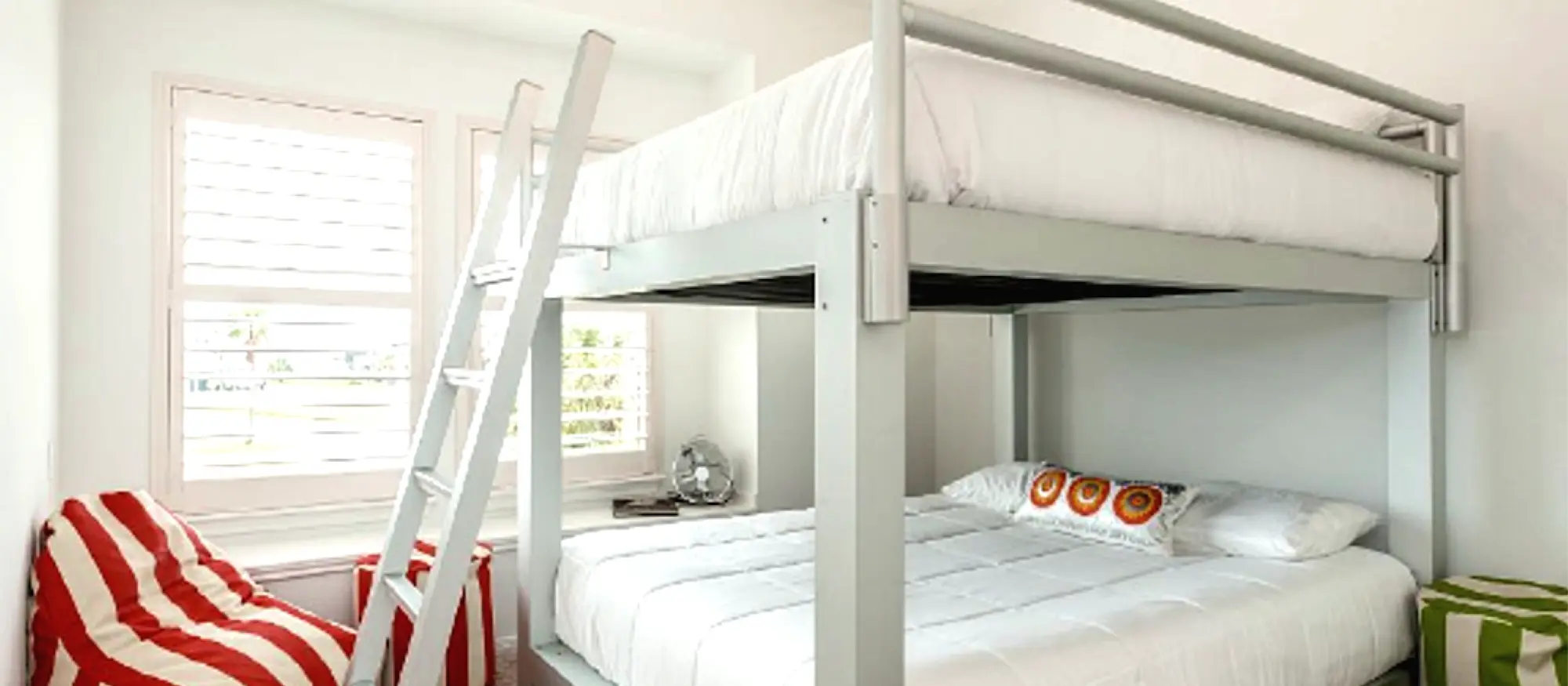
Bunk bed accidents are more common than you would think. Did you know an average of 36,000 bunk bed-related injuries are treated in ERs every year? While most of these injuries are caused by jumping, improper usage, and faulty structure, rest assured that these accidents are preventable when you follow the proper safety guidelines and educate your children on how to properly and safely use their bunk beds. So before you buy a bunk bed for your child, here are some of the most important safety tips to prevent injuries from happening.
Choose a Well-Constructed Bed
First and most importantly, make sure that your bunk bed is well-constructed and meets the current safety standards. Here at Francis Lofts & Bunks, our beds are certifiably safe, conforming to the latest consumer product safety standards. When you purchase one of our beds, you can rest assured that you won’t be going anywhere but to sleep!
Our bunk beds are constructed with an aluminum frame that is tied together with strong x-braces and the bottom bed frame in the bunk, for the ultimate in sway strength, support and safety.
Purchase Proper Safety Rails
If you research any bunk bed safety site, they cannot stress enough the importance of proper safety rails. For children or adults of any age, safety rails offer up added security so that you can prevent falling. Our bunk beds come standard with 1 side rail, but you can choose 1 side rail and 2 end rails, or you can have safety rails on all sides.
Use Guardrails on All Sides for Kids Under the Age of 13
Guardrails are an important safety feature to prevent children from rolling over and falling out of their bunks. While we suggest guardrails on both sides of the top and bottom bunk, they are especially important in the top bunk.
Be sure to check the measurements of the guardrails before purchasing and installing. The gaps in the guardrails should be 3.5 inches or smaller to prevent strangulation and to stop your child’s head from getting stuck. In addition, guardrails need to extend at least 5 inches above the mattress top to prevent kids from rolling off. As a rule of thumb, your child shouldn’t be able to slide under the guardrail when the mattress is compressed by his or her body weight. If they can, put a thick pad under the mattress, or buy a new one that’s thicker by design.
Note Weight Guidelines
Checking the weight limitations of your bunk bed is crucial. While all bunk beds are different, our sturdy beds hold up to 2,000 lbs! We built these beds with adults in mind, so rest assured that our beds withhold their weight standards.
Choose the Right Height for Your Room
Measuring your ceilings to ensure you are ordering the right size bunk bed is an important safety aspect. Our beds can be ordered for 8’, 9’ and 10’ ceilings. In addition, they all meet the minimum Consumer Product Safety Commission recommendation of at least 30” of headroom between the bed and the ceiling.
Adhere to Age Requirements
The Nationwide Children’s Center for Injury and Policy suggests that any child under six years of age is too young to sleep on the top bunk. The greatest instances of bunk bed-related injuries are from falls, and more than half of them occur in children under the age of five. This is why it is especially important to be sure your child is over six years of age before sleeping or playing in a bunk bed.
Secure the Ladder to the Bed
Be sure to assemble the ladder correctly according to the assembly instructions and make sure the ladder is secured to the bed. After you have set up the bunk bed, be sure to take time and teach your children how to properly climb the ladder and stress the importance of not horsing around on it. Be sure that the ladder is not too close to a dresser or chair so children won’t be tempted to jump from one to the other. In addition, the ladder should be free of toys, clothes or other clutter. Place a nightlight close to the bed, so that your child is able to easily find the way in the dark.
Follow Proper Assembly Instructions
While you may want to jump right in and assemble your bunk sans instructions, resist the urge to take this on as a simple DIY project. Following the proper installation and assembly instructions to a tee is crucial. Don’t assume you know which pieces fit together, as this can cause problems down the line. In addition, don’t substitute homemade parts for any included in the box, as this is sure to be problematic. Many companies put their assembly instructions online in case you lose them, and a quick Google search will help you to find them. If you purchased one of our bunk beds, you can find our assembly instructions here.
Follow Mattress Thickness Recommendations
Be sure to check the safety label on your bunk bed to see what size mattress will properly fit your bunk bed. Issues only arise when using a mattress that is too big or too small for the frame of both the upper and lower bunks. Children can slip or fall out of the bed if the size of the mattress does not properly fit the bed frame. Go over the rulesNo matter what age your child is, it is important to go over “bunk bed rules” with them. This includes how to use the ladder properly and how they should only use the bed for sleeping and relaxing (not horsing around).
Setting these ground rules early on will help to prevent accidents down the line.
